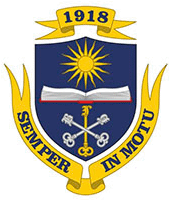A research team from Voronezh State University obtains experimental results using megascience facilities. These results are used to integrate natural objects, cells, and bacteria with nanomaterials. Recent results of the work have been published in Results in Physics.
The research is conducted within the project “Compatibility and transformation of functional inorganic nanoparticles with cell cultures in hybrid material produced in vitro according to synchrotron studies of the reconstruction of atomic and electronic structure”, supported by the Russian Science Foundation in the contest of 2019 for the event “Research Conducted via the Existing World-Class Research Infrastructure” within the presidential programme of research projects conducted by leading scientists, including young scientists. The project is implemented with the help of the unique world-class infrastructure facility: Kurchatov Centre for Synchrotron Radiation and Nanotechnology.
The research carried out by the Voronezh scientists is dedicated to a very timely scientific topic, nature-like technologies, and is conducted in several areas. One of such areas involves using nanoparticles of silica which is a key material for micro- and nanoelectronics. Silica-based technologies are well known and well-tested. This means that they can be managed efficiently.
Sergey Turishchev, an associate professor at the Faculty of Physics of Voronezh State University, the head of the joint laboratory "Electronic Structure of Solids", and the head of the project, said that “this work is mainly aimed at studying the properties of silica nanoparticles. Thanks to the infrastructure and the environment created at the Kurchatov Institute, we obtain accurate data, practically at the atomic level, and can reconstruct atomic structure of silica-based nanoscale particles. We managed to show that by knowing the properties of nanopaticles we can technologically and efficiently manage them and integrate them with cells. Our task is to understand how and in what way nanoparticle will influence its environment and how the cellular environment will influence it.”
He also emphasised that the results of the work can be used in different areas: “The most obvious area is medicine, especially the actively developing theranostics, a combination of disease diagnostics and therapy, including targeted treatment. Silica nanoparticles are characterised by high biocompatibility, unlike some materials used at present. These materials are not always efficiently removed from the body, whereas silica, especially in small doses peculiar to nanoparticles, can successfully fulfil necessary tasks and be easily removed from the body after dissolving.”
A young researcher Elena Parinova, PhD in Physics and Mathematics, told us about another area of research: “The second area of our research is combination of inorganic iron nanoparticles with E. coli cells. We use cells as a natural object due to application-oriented prospects of our research. Iron nanoparticles are formed naturally in a cell due to protein molecules of certain types. These molecules, as part of the entire cell, accumulate these inorganic nanoparticles of iron oxide. These nanoparticles are of very small sizes, just five or six nanometres. This means that molecules are natural “generators” of nanoparticles. And the cell is a “factory”. And the smaller the particles, the more difficult it is to obtain them in a uniform size or composition, whereas protein molecules form identical particles on their own.”
The considerable part of the work is dedicated to theoretical modelling, calculations based on first physical principles. The researchers calculated fundamental properties of materials that define nanoparticles, for example, the electron-energy spectrum. The modelling results are then aligned with the experiment, which allows them to get a better insight into the comprehensive research. The project headed by Sergey Turishchev is being developed by a team of researchers including: Professor Sergei Kurgansky, DSc, and researcher Stanislav Ryabtsev, DSc. However, the majority of researchers are young scientists, including master’s students in the last year of their studies, who process an enormous amount of theoretical and experimental data in modern research areas.
“Experiments can be very challenging at times and they can be conducted at the response limit for a long time. It would be impossible to carry them out without the support of our colleagues from various organisations in Russia and even abroad. We would like to express our gratitude to Vladimir Sivakov’s team from Leibniz Institute of Photonic Technology (Jena, Germany), Ruslan Ovsyannikov and Dmitry Marchenko from Berlin Helmholtz Centre of Materials and Energy (Berlin, Germany), Lubov Osminkina, a researcher and the head of the laboratory at the Faculty of Physics at Moscow State University, Sergei Antipov, an associate professor from VSU, with whom we have been involved in a long-lasting and highly successful scientific cooperation,” said Sergei Turishchev. “I would like to pay special attention to the contribution of our colleagues from the National Research Centre "Kurchatov Institute" (Moscow), Ratibor Chumakov and Alexei Lebedev, employees at the source of synchrotron radiation (world-class infrastructure facility). Without their active and comprehensive support it wouldn’t be possible to implement this project and obtain such interesting results.”

